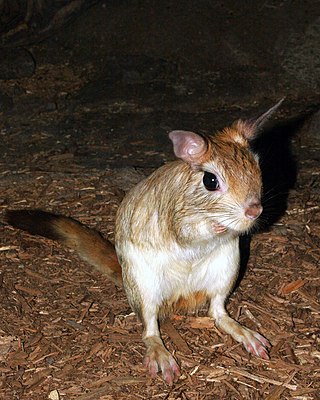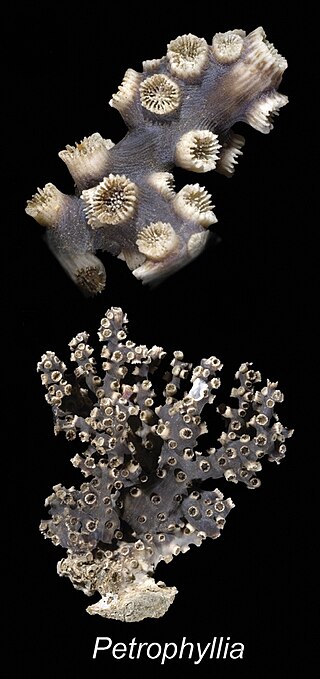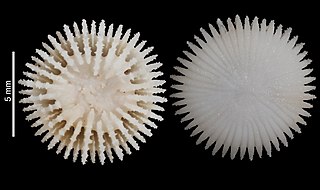
The Pedetidae are a family of rodents. The two living species, the springhares, are distributed throughout much of southern Africa and also around Kenya, Tanzania, and Uganda. Fossils have been found as far north as Turkey. Together with the anomalures and zenkerella, Pedetidae forms the suborder Anomaluromorpha. The fossil genus Parapedetes is also related.

Pandanus is a genus of monocots with about 578 accepted species. They are palm-like, dioecious trees and shrubs native to the Old World tropics and subtropics. Common names include pandan, screw palm and screw pine. They are classified in the order Pandanales, family Pandanaceae.

Montipora is a genus of Scleractinian corals in the phylum Cnidaria. Members of the genus Montipora may exhibit many different growth morphologies. With eighty five known species, Montipora is the second most species rich coral genus after Acropora.
Rhytidocystis is a genus of apicomplexans. It is the only genus within the monotypic family Rhytidocystidae. The species of this genus are parasitic protozoa found in marine annelids.

Goniopora, commonly referred to as flowerpot coral or daisy coral, is a genus of colonial stony coral found in lagoons and turbid water conditions. Goniopora have numerous daisy-like polyps that extend outward from the base, each tipped with 24 stinging tentacles which surrounds a mouth.

Pocillopora is a genus of stony corals in the family Pocilloporidae occurring in the Pacific and Indian Oceans. They are commonly called cauliflower corals and brush corals.

Thomas Wayland Vaughan was an American geologist and oceanographer. He worked with the United States Geological Survey and United States National Museum, investigating the geology of the West Indies, Panama Canal Zone, and the eastern coast of North America. In 1924 Vaughan became director of the Scripps Institution of Oceanography and held the post until his retirement in 1936. His research work concentrated on the study of corals and coral reefs, the investigation of larger foraminifera, and oceanography.

Balanophyllia is a genus of solitary corals in the order of stony corals.

Pseudocaecilius is a genus of false lizard barklice in the family Pseudocaeciliidae. There are more than 50 described species in Pseudocaecilius.

Cyphastrea is a genus of massive reef building stony corals in the family Merulinidae, commonly known as brain coral.
Gardinerpiscis is an extinct genus of prehistoric actinopterygian fish that lived during the Kungurian age of the early Permian epoch in what is now Kazakhstan. It was originally named "Gardineria" by Kazantseva-Selezneva (1981). Because this genus name was already given to an extant scleractinian coral, the new name Gardinerpiscis was erected for the Permian fish. The genus includes a single species (monotypy): Gardinerpiscis akkolkensis.

Smitanosaurus is a genus of dicraeosaurid sauropod dinosaur from the Late Jurassic of Colorado. The genus contains one species, S. agilis, originally assigned to the defunct genus Morosaurus.

Madracis is a genus of cnidarians belonging to the family Pocilloporidae. The genus has a cosmopolitan distribution.

Endopachys is a genus of corals belonging to the family Dendrophylliidae.

Eguchipsammia is a genus of corals belonging to the family Dendrophylliidae.

Gardineria is a genus of corals belonging to the family Gardineriidae.

Petrophyllia is a genus of corals belonging to the family Oculinidae.

Trochocyathus is a genus of corals in the family Caryophylliidae. Living species are found in waters near Hawai'i at depths of 64 to 1,020 meters. Fossil species are found as far back as the latest Paleocene in the Dilwyn Formation of Australia, in the late Cretaceous in the Woodbury Formation of New Jersey, and in Suffolk.

Anthemiphyllia is a genus of corals within the family Anthemiphylliidae. There are currently 8 extant and 2 extinct species assigned to the genus.

















